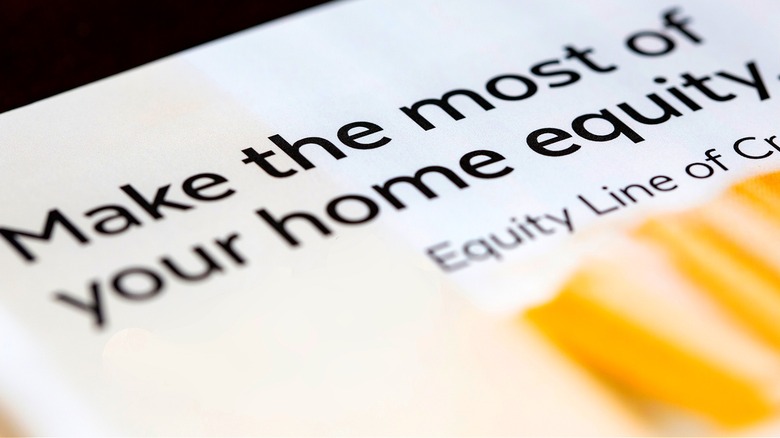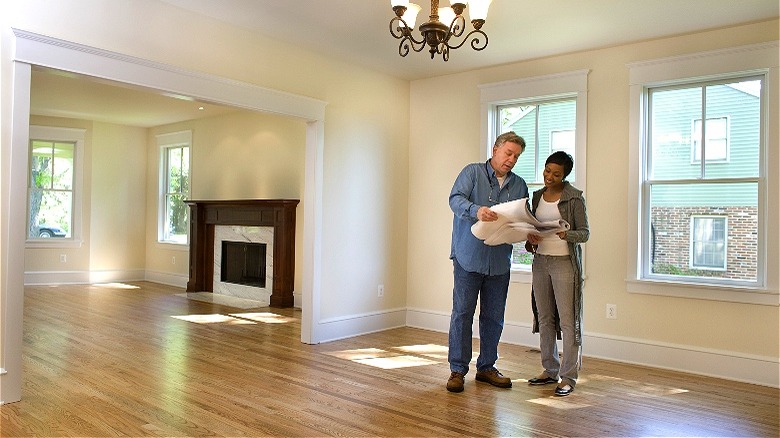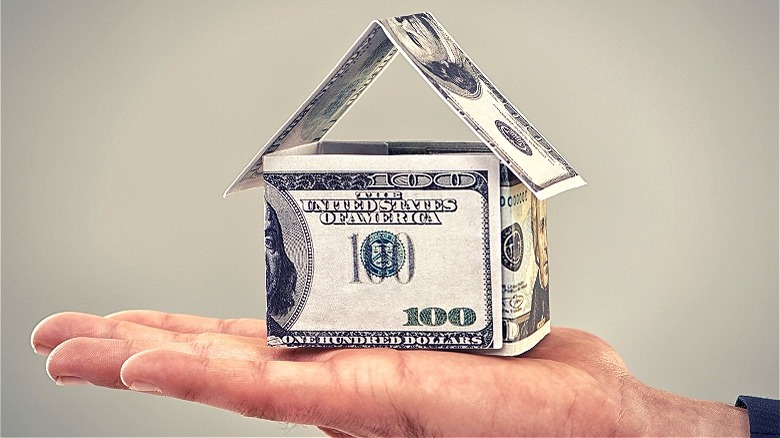A Significant Drop In Home Value Can Impact Your HELOC. Here's How
Home prices continue to hit record high after record high. While those affordability metrics aren't such great news if you're part of a younger generation and shopping for a new or new-to-you home, existing homeowners are likely sitting on considerable price appreciation. To unlock that built-up equity, you have a few options, including refinancing your first mortgage, getting a second mortgage (aka home equity loan), or establishing a HELOC, or a home equity line of credit. Like the name implies, the latter is a revolving line of credit that typically carries a variable interest rate.
HELOC limits vary among lenders, and they also take into account your credit score, income, and other debt. However, you'll typically be able to borrow 85% or 90% of your home's value, minus the mortgage balance; this percentage is referred to as the combined loan-to-value (CLTV) ratio. As an example, say your home is worth $500,000 and you owe $300,000 on your mortgage, tapping 90% of your equity per lender terms would equal a $150,000 line of credit. Here's the math: ($500,000 * .9) – $300,000 = $150,000.
There's no obligation to borrow the entire amount available, although you could. Instead, most HELOC borrowers draw smaller sums on a piecemeal basis and pay interest on the total amount currently borrowed. At some point in time (10 years after opening a HELOC in many cases), the "draw period" comes to an end and borrowing is no longer possible. At that stage, the borrower must then begin making payments of principal and interest to pay down the HELOC balance. Note, borrowers can pay the funds back sooner, if desired.
Your HELOC can be reduced or even frozen
We began this article by discussing the relentless gains in home values over the last several years, but home prices do occasionally fall. That's especially true if viewing specific local and regional markets as opposed to nationwide averages. So, can you still borrow from your HELOC if the value of your home falls? It depends on how much is already borrowed and whether your lender opts to completely freeze the HELOC or merely reduce the credit line.
For example, let's revisit our earlier illustration of a home worth $500,000 with a HELOC credit limit of $150,000. If that home declines in value from $500,000 to $450,000 and the mortgage is still $300,000, then the new credit limit is ($450,000 * 0.9) – $300,000 = $105,000. If the amount that's already borrowed from the HELOC equals or exceeds that amount, then you won't be eligible to borrow any additional funds. If the amount borrowed is less than the new, lower credit limit, then you may continue borrowing.
In some extreme cases, your lender might freeze your HELOC altogether. That means no further borrowing is possible regardless of how much or how little you've already borrowed. Although the HELOC freeze could result from declining home value alone, there are likely to be other reasons for the decision, like a falling credit score (here's what's considered a bad credit score), missing loan payments, or loss of gainful employment. (On that note, here are 17 tips for paying off your debt.)
You can appeal a decision at your own expense
If a lender decides to reduce or freeze your HELOC, the lender must send a written notice within three business days of taking action. If you feel that the new, lower property value is unfair, you can appeal the decision. However, paying for a new professional appraisal — typically several hundred dollars — will be your responsibility, and there's no guarantee the appeal will be successful, even with a favorable appraisal.
In summary, small fluctuations in home value are normal. As such, your lender won't constantly reevaluate your HELOC borrowing limits with every minor change in home value. However, a more significant or prolonged drop in home value could lead a lender to either reduce the HELOC's credit line or in an extreme case, freeze the HELOC altogether. Note, that any funds already borrowed aren't affected and are yours to continue using.
All that said, do think twice before applying for any home equity loan. Be careful to use a HELOC for the correct reasons, such as necessary home repairs or consolidating high-interest-rate credit card debt. Don't be tempted to borrow from a HELOC for frivolous spending or to mask deeper financial issues. After all, your home is the collateral for a HELOC loan, and you don't want to put what's likely your largest asset and a literal roof over your head at risk.


